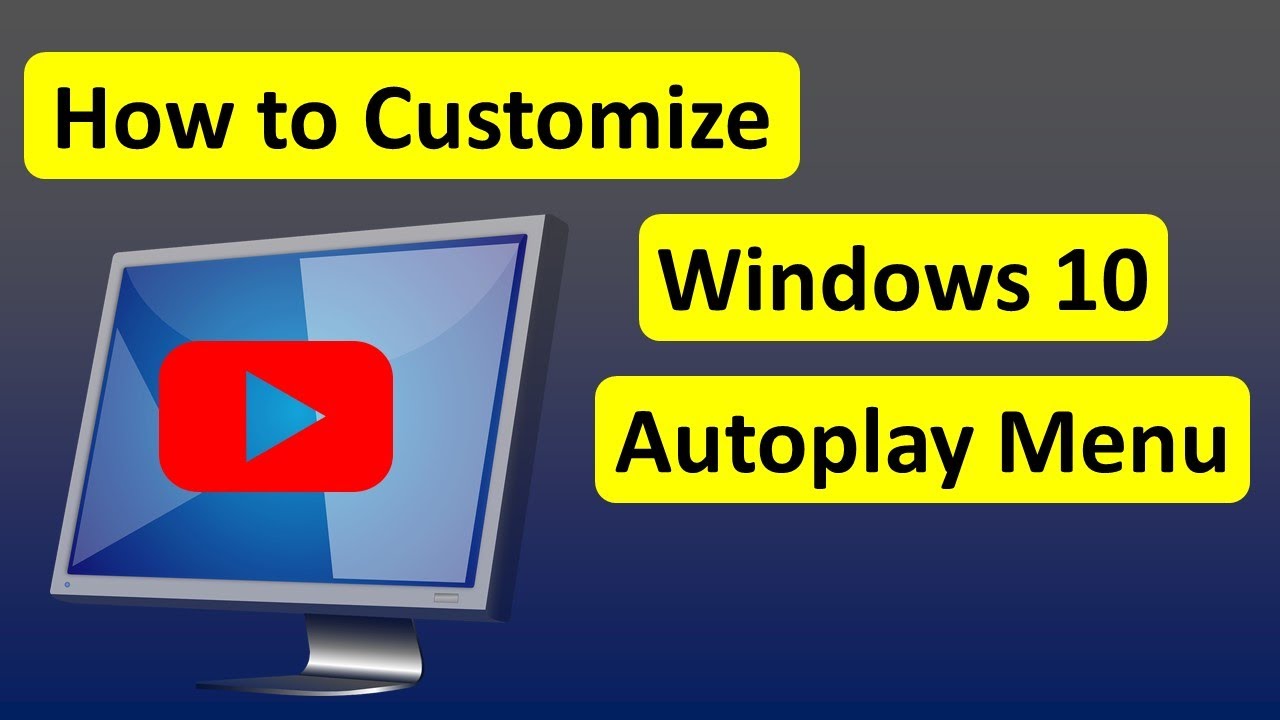
Introduction:
Windows 10, Microsoft’s versatile operating system, offers users a multitude of customization options to tailor their computing experience. One often overlooked but powerful feature is the Autoplay menu, which controls the actions that occur when you connect external devices such as USB drives, CDs, or DVDs. In this extensive guide, we will delve into the intricacies of customizing the Autoplay menu in Windows 10, providing users with the knowledge and tools to enhance their interaction with external media and streamline their workflow.
Understanding the Autoplay Menu:
The Autoplay menu in Windows 10 is designed to provide users with quick and convenient access to actions that can be performed when connecting external devices. Whether you want to open a file, play media, or import photos, the Autoplay menu allows you to customize these actions based on your preferences. By fine-tuning Autoplay settings, users can optimize their workflow, increase efficiency, and tailor the system’s response to various types of media.
Benefits of Customizing the Autoplay Menu:
- Efficient Workflow:
- Tailoring the Autoplay menu ensures that your preferred actions are performed automatically when connecting external devices, reducing the need for manual intervention and streamlining your workflow.
- Personalization:
- Customizing Autoplay allows you to personalize your interaction with different types of media, ensuring that the system responds according to your preferences and requirements.
- Quick Access to Content:
- Autoplay settings can be configured to provide quick access to specific types of content, such as photos, videos, or documents, making it easier to work with external media.
- Enhanced Security:
- By customizing Autoplay, you have control over how the system responds to potentially harmful media. This can contribute to enhanced security by preventing automatic execution of certain types of files.
- Reduced Distractions:
- Fine-tuning Autoplay settings helps in reducing unnecessary pop-ups and distractions, ensuring a seamless and focused user experience.
Customization Options for the Autoplay Menu:
Windows 10 provides users with various customization options for the Autoplay menu, allowing them to define specific actions for different types of media. The following are three commonly used methods to customize Autoplay settings:
Method 1: Using the Settings App
- Open Settings:
- Click on the “Start” button and select the gear-shaped “Settings” icon to open the Settings app.
- Access Devices Settings:
- In the Settings app, click on “Devices.”
- Navigate to Autoplay Settings:
- In the left sidebar, select “Autoplay.”
- Configure Autoplay Options:
- Toggle on the switch for “Use Autoplay for all media and devices” to enable Autoplay.
- Under “Choose Autoplay defaults,” use the drop-down menus to select the default actions for different types of media (e.g., pictures, videos, or mixed content).
- Apply Changes:
- Once you have configured your Autoplay settings, close the Settings app, and the changes will be applied.
Method 2: Using Control Panel
- Access Control Panel:
- Press “Windows key + X” and select “Control Panel” from the menu.
- Open Autoplay Settings:
- In the Control Panel, click on “Hardware and Sound” and then select “Autoplay.”
- Configure Autoplay Options:
- In the Autoplay window, use the drop-down menus to set default actions for different types of media.
- Check or uncheck the box next to “Use Autoplay for all media and devices” as per your preference.
- Apply Changes:
- Click on “Save” or “Apply” to save the changes to your Autoplay settings.
Method 3: Using File Explorer
- Access Autoplay Settings:
- Open File Explorer and navigate to “This PC” or “Computer.”
- Right-Click on Device:
- Right-click on the external device for which you want to customize Autoplay settings.
- Select Properties:
- From the context menu, select “Properties.”
- Navigate to Autoplay Tab:
- In the Properties window, click on the “Autoplay” tab.
- Configure Autoplay Options:
- Use the drop-down menus to set default actions for different types of content on the selected device.
- Apply Changes:
- Click on “Apply” and then “OK” to apply the changes.
Considerations and Additional Tips:
- Check for Updates:
- Ensure that your Windows 10 system is up-to-date to access the latest features and security enhancements related to Autoplay settings.
- Security Considerations:
- Exercise caution when configuring Autoplay settings, especially for removable devices. Avoid enabling Autoplay for potentially harmful media or unknown sources.
- Explore Third-Party Software:
- Consider exploring third-party software that offers advanced customization options for Autoplay settings. These tools may provide additional features and fine-tuning capabilities.
- Device-Specific Autoplay:
- Autoplay settings can be configured on a per-device basis, allowing users to customize the behavior for different external media.
- Regular Review of Settings:
- Periodically review and adjust your Autoplay settings based on changes in your workflow or preferences.
- Community Forums and Discussions:
- Engage with Windows 10 community forums and discussions to discover advanced Autoplay customization tips, troubleshooting advice, and insights from experienced users.
Conclusion:
Customizing the Autoplay menu in Windows 10 is a powerful way to optimize your interaction with external devices and media. By following the comprehensive methods outlined in this guide, users can tailor their Autoplay settings to suit specific preferences, enhancing efficiency and personalization. Embrace the flexibility of Autoplay customization, streamline your workflow, and experience a more tailored and efficient computing journey. Windows 10 offers a multitude of tools—master them to make your digital experience truly yours.